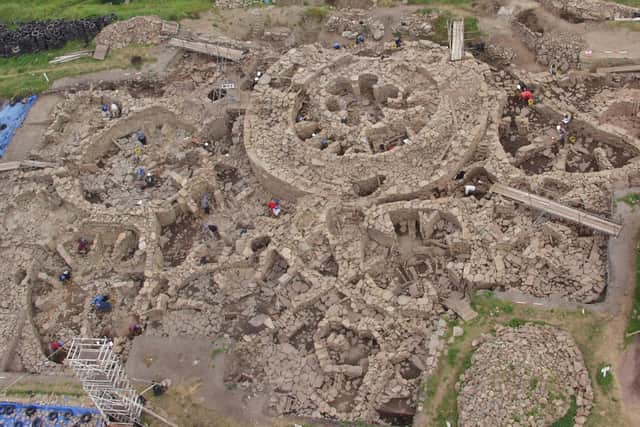Scotland iron age settlement among seven UK sites given Unesco world heritage status backing
The Zenith of Iron Age Shetland, a collection of three ancient settlements dating back thousands of years, has been placed onto the ‘Tentative List’.
The application for the settlements and surviving structures of Mousa, Old Scatness and Jarlshof was made by the Shetland Amenity Trust in 2010.
Advertisement
Hide AdAdvertisement
Hide AdIron Age building develops from brochs through to proto-urban settlements. The south mainland of Shetland contains a coherent concentration of outstanding examples of iron age development over about 1,000 years, including roundhouses and wheelhouses.


Unesco's World Heritage site system offers the opportunity for cultural and natural heritage sites to gain international recognition and promote themselves on a global stage.
The announcement by the Department for Culture, Media and Sport (DCMS) has revealed the seven places to be placed on its "Tentative List", published around every ten years, which sets out the sites it is felt have the best chance of succeeding in being included.
Five new sites from across the UK and overseas territories have been added.
Among the cultural sites on the list is York, which harbours a rich history left behind by its Anglo-Saxon, Viking and Norman inhabitants, with civic and religious buildings including its Minster.
Also backed by the Government is Birkenhead Park, which opened in 1847, and was a pioneering project to bring greenery to urban environments.
The site provided a blueprint for municipal planning that has influenced town and city parks across the world, including New York's Central Park.
Places of natural significance recommended for consideration by the DCMS include the East Atlantic Flyway, a migratory bird route over western parts of Europe including Yorkshire, Lincolnshire, Norfolk, Suffolk, Essex and Kent.
Advertisement
Hide AdAdvertisement
Hide AdThe five sites join two more that submitted their full nominations to Unesco earlier this year, and remain on the Government's Tentative List.
They are The Flow Country, a large area of peatland across Caithness and Sutherland in the north of Scotland which plays a crucial role in supporting biodiversity, and the Gracehill Moravian Church Settlement in Northern Ireland.
Comments
Want to join the conversation? Please or to comment on this article.